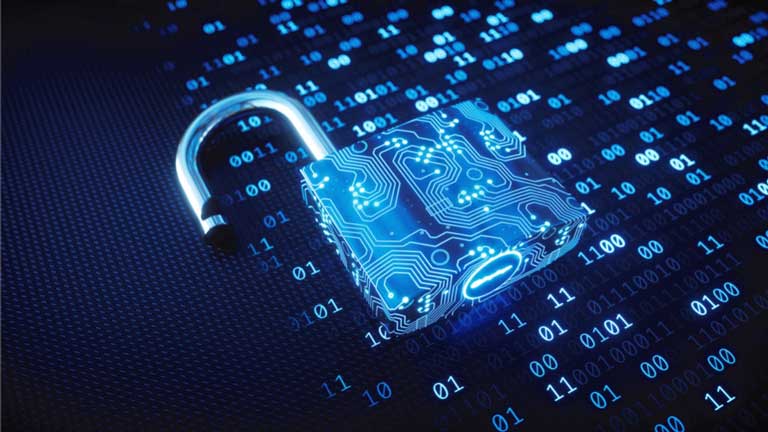Unified Endpoint Management (UEM) refers to a class of software tools that allow technology experts to secure, manage and deploy company IT resources from a single portal. As device and application usage grows rapidly, companies critically need a unified interface to integrate new and legacy IT infrastructure. In addition, a well-implemented UEM system improves security, reduces the total cost of ownership, and provides valuable business data.
Most companies manage their IT endpoints with either Enterprise Mobility Management (EMM) or Mobile Device Management (MDM) systems. However, as more organizations migrate to Cloud Infrastructure as a Service to deploy their operations, the need to broaden the scope of endpoint management increases. Coupled with more employees working remotely, organizations need to adopt a new way of managing, securing, and deploying all IT resources.
Unified Endpoint Management is the answer. UEM ensures seamless integration of remote and on-premises operations with no reduction in user experience, security, or IT resource accessibility.
Security, indeed, is a significant component of UEM. Growth in cloud computing, the Internet of Things, and work-based mobile device usage has dramatically increased attack surfaces for modern enterprises. As such, organizations need a unified security program that scales with an increasing number of devices and applications.
Below we delve into the benefits of UEM and look at some use case examples.
What is Unified Endpoint Management (UEM)?
Unified Endpoint Management System (UEM) is a set of software tools that allow organizations to remotely manage devices, licenses, applications, and business data. UEM evolved from MDM and EMM and combines a diverse set of capabilities to manage a complex mobile landscape.
Unified Endpoint Management capabilities include:
- Mobile Device Management (MDM)
- Mobile Information Management (MIM)
- Application containerization
- Identify and Access Management (IAM)
- Mobile Threat Defense (MTD)
- BYOD management
Unified Endpoint Management (UEM) Solution – Benefits
Enhanced Device Security

Unified endpoint management solutions simplify device security because IT admins can manage security from a centralized platform instead of working on individual devices. Additionally, as a company grows, endpoints also increase.
Trying to manage security in singled-out devices is tedious and less effective. By unifying all endpoints into one interface, admins can monitor security activities and mitigate potential risks before they spread to all other endpoints. UEM solutions integrate these security controls:
- Actively monitoring inventory of authorized and unauthorized devices to reduce the ability of malicious actors to exploit systems
- Secure endpoint installations and configurations
- Privileges and accessibility controls
- Inventory and control of authorized and unauthorized software
A Unified Interface for Device Management
As the name suggests, unified endpoint management provides a single-pane platform to manage all IT devices, applications, and features. This provides IT admins with greater control over all endpoints, and the ability to configure, monitor, update, patch, and push security policies to every device – all from a single dashboard. The long-term effect is reduced cost of ownership for devices and applications due to better optimization of existing resources.
IT Cost Reduction
UEM maximizes operational efficiency and lowers IT costs by reducing endpoint downtime. Unifying endpoint management allows IT admins to detect infrastructure issues more efficiently, thus reducing unplanned maintenance cycles. They also control and deploy configurations with remote and sophisticated software from a single console, thereby reducing service trips.
UEM also helps companies increase the capacity and lifespan of IT resources, thus lowering the costs that would otherwise come with replacing them or purchasing additional assets or licenses. By cataloguing all assets and using UEM to optimize them to handle more workloads, companies reduce the Total Cost of Ownership (TCO) of their IT resources.
Emerging Technology Management
The basic foundation of UEM is the convergence of IT hardware and mobile device management. However, as devices evolve into high-tech solutions such as AR, wearable, robotics, and VR, managing component security and connectivity requires a UEM approach.
Unified Endpoint Management simplifies patch management of IoT, AR/VR, wearable and AI-driven devices and pushes any new updates to these systems. UEM also manages privileges and access to personal information across these devices.
Unified Endpoint Management – Features
Unified Security and Protection
Unified Endpoint Management centralizes security management by interlinking all company endpoints and deploying multi-level protection to all hardware and software.
Another crucial feature in endpoint security is patch management and reporting. This cybersecurity approach minimizes endpoint vulnerabilities through monitoring, issue reporting, and routine updates.
Machine Learning and AI Integration
UEM applies data analytics to discover and deliver accurate IT infrastructure information. This information is critical to identifying system inefficiencies and security loopholes.
One of the core functions of ML in UEM is device and user evaluation to identify any risks posed to the overall unified system. Known as the “zero-trust” approach, ML continuously tracks and monitors device usage to identify activities that pose a threat to the organization.
Combining machine learning and continuous monitoring helps organizations to neutralize potential threats before they infect the whole network.
Zero trust relies on measures such as encryption, authentication, analytics, behaviour recognition, and identity management to firmly secure endpoints.
Multi-Platform Support
An effective Unified Endpoint Management platform should integrate all device types, remotely and on-premises. This is an important feature, especially with the growth of Bring Your Own Device (BYOD) practices. The software should easily integrate any device type regardless of hardware, manufacturer, or Operating System.
Multi-platform support also means that the UEM software can automatically deploy new features, configurations, and policies to different Operating Systems. This support ensures faster integration of new devices and reduces help-desk support calls.
Inventory Management
With UEM, companies can streamline inventory management and gain better visibility into device usage and vulnerable systems with powerful reporting features. Importantly, since UEM provides a single, centralized platform for endpoint management, there’s no need to compile, compare, and analyze reports from multiple sources. This enhanced visibility enables IT admins to identify inefficiencies and troubleshoot, diagnose, and resolve issues remotely.
Unified Endpoint Management – Use Cases
With all the UEM solutions available in the market, it can be a daunting task to determine what your company requires. These use cases will help you understand how UEM applies in the real world:
Mobile Device Management

If your company provides mobile devices to employees, UEM helps you centrally manage security, updates, and maintenance. UEM also allows you to onboard employee-owned devices (BYOD) and apply the same measures as corporate-owned employee assets.
Remote Work Management
As the remote work trend continues, enterprises are faced with numerous challenges setting up employee-owned devices, preparing them for remote work, and then continuously securing, monitoring, and updating those devices.
With UEM, both enterprise-owned and employees’ personal devices can be managed seamlessly and remotely to meet the organization’s remote work requirements. Full corporate data and app protection is enabled with robust security configurations, advanced network settings that allow IT admins to determine how devices connect to the internet, and AI-powered monitoring to identify activities that pose a threat to the organization’s assets and data.
IT Cost Management
UEM is a strategic tool for organizations to position their businesses for success. A scattered IT landscape contributes to a higher cost of ownership due to under-optimized resources.
By unifying all endpoints into one interface, IT admins can deploy underused resources to other business functions, manage endpoint complexity more efficiently and comprehensively, reduce reliance on numerous disconnected tools for reporting and monitoring, and improve IT security administration. Combined, this all drastically improves IT cost management for the enterprise while supporting greater productivity throughout the workforce.
Unified Endpoint Management with CG Technologies
A strategically aligned IT landscape is essential for business growth and expansion. It’s not enough to install endpoints and have admins manage them. You need a business-conscious approach to optimizing your endpoints so they can deliver services efficiently and at a low cost.
Unified Endpoint Management solutions ensure all endpoints run in harmony with business operations, quickly scale up, and accommodate mass deployment and onboarding.
CG Technologies provides intelligent and secure UEM solutions to empower your employee with tools to increase productivity and maintain engagement.
We help you gain control over your users, data, content, and applications across all your devices and cloud architecture.
Additionally, our UEM program integrates remote computing capabilities to allow you to manage mission-critical workflows efficiently and with minimal downtime.
A subset of UEM is Unified Threat Management (UTM), also known as Mobile Threat Defense (MTD). Most companies rely on simple firewalls and conventional security solutions, which are insufficient to protect your business. In addition, attackers have grown more sophisticated, and they can easily bypass most security measures. Your company needs a customized UTM solution covering more than just the basics like firewalls, VPN, and malware. You require a holistic approach that protects endpoints, software, networks, data – with 24/7 support. Contact us to discuss how we can help manage your IT needs.
